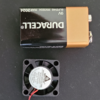I was thinking about Theraphosa but really haven't begun researching what would work best. This may be backwards but I want this type of environment and need to find a spider that will live well within it.
The buffer would look more like this image, the plants I have are similar to these. I don't have the ferns as tall as that, they are much shorter so it would all fit within my dimensions.

I could drill a 2" hole in the glass for a vent and then go with that, I imagine one would be enough but I could drill two. The other thought I had was to make the entire lid stainless mesh and then cover it with screen using both of your ideas. The mesh I have is 18ga and enough to cover the spider's enclosure weighs about 1.4 kilos so it would make for a solid top. The fans would certainly not need to do much except circulate the air a little bit. Running a linear grill low to provide passive ventilation in a tank with my dimensions is just not going to work logistically so I have to get more creative with the ventilation.
The buffer would look more like this image, the plants I have are similar to these. I don't have the ferns as tall as that, they are much shorter so it would all fit within my dimensions.

I could drill a 2" hole in the glass for a vent and then go with that, I imagine one would be enough but I could drill two. The other thought I had was to make the entire lid stainless mesh and then cover it with screen using both of your ideas. The mesh I have is 18ga and enough to cover the spider's enclosure weighs about 1.4 kilos so it would make for a solid top. The fans would certainly not need to do much except circulate the air a little bit. Running a linear grill low to provide passive ventilation in a tank with my dimensions is just not going to work logistically so I have to get more creative with the ventilation.










